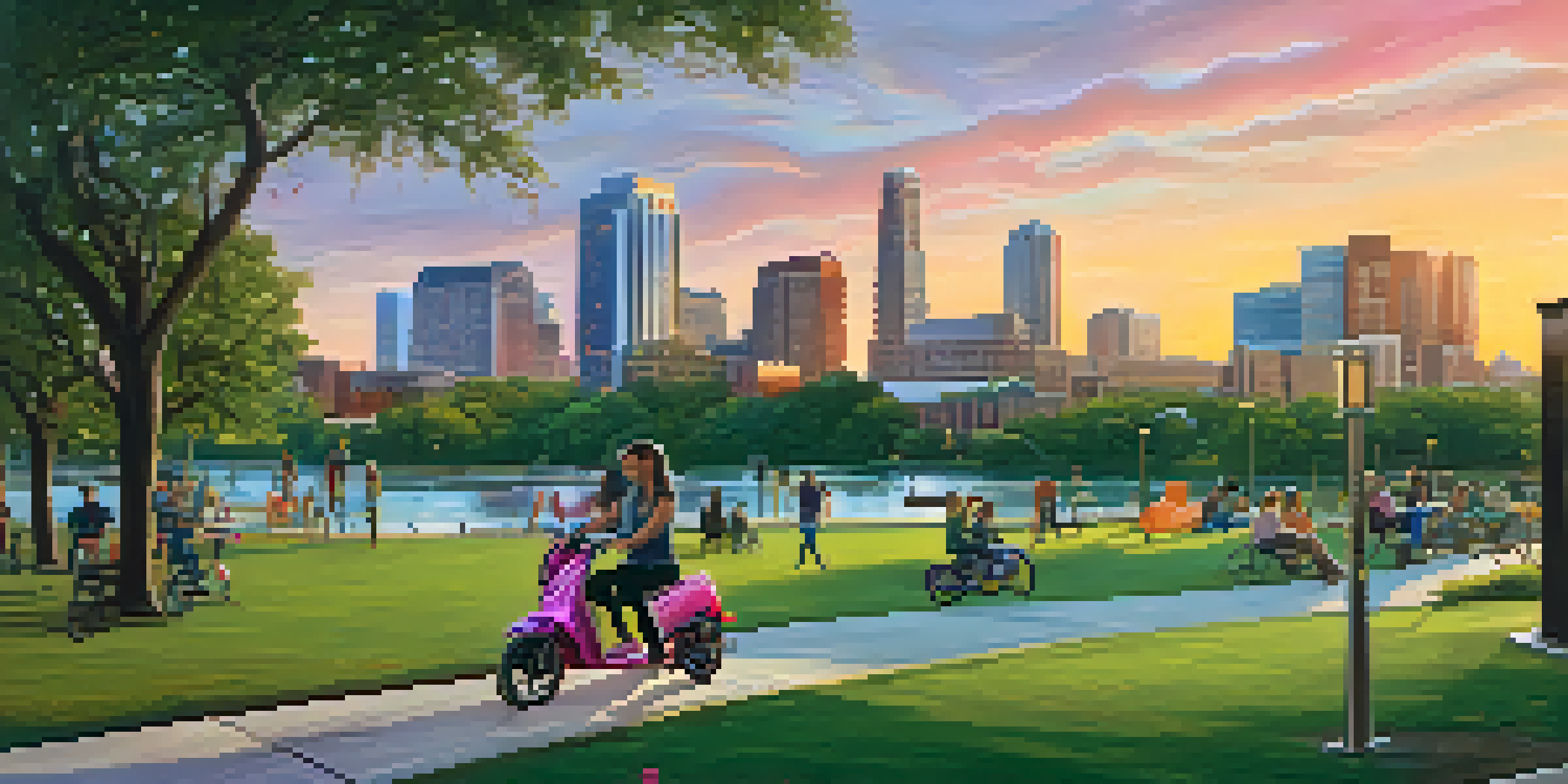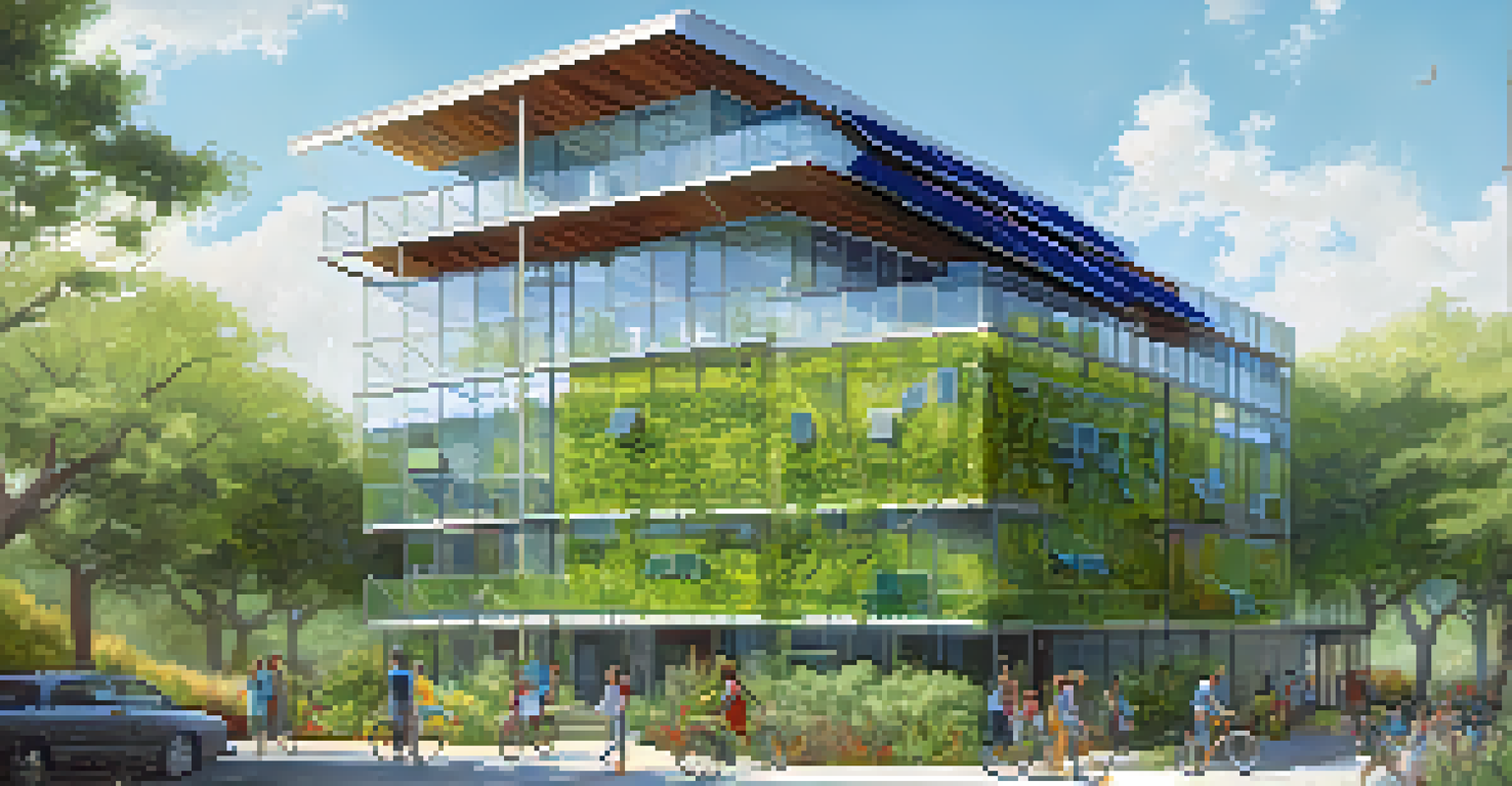The Role of Technology in Shaping Austin's Urban Landscape

Introduction to Austin's Evolving Urban Landscape
Austin, Texas, known for its vibrant culture and tech scene, is experiencing significant changes in its urban landscape. This evolution is driven by technology, impacting everything from transportation to housing. As a city that embraces innovation, Austin is a prime example of how urban areas can adapt to modern demands.
The cities of the future will be smart, sustainable, and truly livable.
With a growing population and an influx of tech companies, the city is not just expanding; it's rethinking how it uses space and resources. The urban landscape is becoming a reflection of technological advancements, making the city smarter and more efficient. This transformation is essential for maintaining Austin's unique character while accommodating growth.
In this article, we will explore the various ways technology is shaping Austin's urban environment and what this means for its residents and visitors alike. From smart infrastructure to sustainable building practices, let’s dive into how tech is redefining Austin.
Smart Infrastructure: The Backbone of Modern Cities
Smart infrastructure is at the heart of Austin's urban transformation. This includes the integration of sensors, data analytics, and IoT devices that monitor and manage city services effectively. For example, smart traffic signals adjust in real-time to reduce congestion, ensuring smoother commutes for everyone.

Austin is also implementing smart lighting systems that not only enhance safety but also conserve energy. These systems adapt based on the time of day and pedestrian activity, showcasing a blend of efficiency and sustainability. Such innovations are crucial in a city that values both progress and environmental responsibility.
Smart Infrastructure Drives Change
Austin's urban transformation is powered by smart infrastructure, integrating technology to enhance efficiency and sustainability.
By investing in smart infrastructure, Austin is positioning itself as a leader in urban innovation. This approach doesn’t just improve daily life; it sets a precedent for other cities looking to modernize while maintaining their unique identity.
Transportation Technology: Revolutionizing Mobility
Transportation is undergoing a radical change in Austin, thanks to technology. The rise of ridesharing services and electric scooters has transformed how residents navigate the city. This shift not only enhances convenience but also encourages a more eco-friendly approach to commuting.
Urbanization is not just about building infrastructure; it’s about building community.
Moreover, the city is investing in smart public transportation systems. Real-time tracking apps allow commuters to plan their journeys more efficiently, reducing wait times and improving overall satisfaction. This tech-driven approach is making public transit a more attractive option for many Austinites.
As these transportation technologies continue to evolve, they will play a pivotal role in reducing traffic congestion and promoting sustainable travel methods. The future of mobility in Austin is bright, with technology leading the charge.
Sustainable Building Practices in Urban Development
Sustainability is a key focus in Austin's urban development, and technology plays a significant role in this area. Many new buildings are being constructed with energy-efficient materials and smart technologies that minimize waste. This not only helps to reduce the carbon footprint but also lowers utility costs for residents.
Additionally, technology is facilitating the use of renewable energy sources, such as solar panels, which are becoming increasingly common in residential and commercial buildings. These practices align with the city’s commitment to sustainability and enhance the quality of life for its residents.
Sustainable Practices in Development
The city prioritizes sustainable building practices, utilizing technology to reduce environmental impact and improve residents' quality of life.
By prioritizing sustainable building practices, Austin is setting an example for other cities. The integration of technology in construction not only addresses environmental concerns but also fosters a sense of community and responsibility among residents.
Data-Driven Urban Planning: Making Informed Decisions
Data-driven urban planning is transforming how Austin develops its neighborhoods. By analyzing data related to traffic patterns, population density, and community needs, city planners can make informed decisions that benefit residents. This approach helps to ensure that developments align with the city's goals and residents' expectations.
For instance, data analytics can identify areas that require more green space or public amenities, allowing for targeted improvements. This level of insight enables the city to allocate resources more effectively, creating a balanced and integrated urban environment.
As Austin continues to grow, leveraging data will be crucial in maintaining its livability. This commitment to informed planning exemplifies how technology can enhance urban development and foster community engagement.
Community Engagement Through Digital Platforms
Technology is enhancing community engagement in Austin, allowing residents to have a voice in urban planning. Digital platforms and social media enable citizens to provide feedback on proposed projects, fostering a sense of ownership over their neighborhoods. This interaction cultivates a collaborative atmosphere, essential for a thriving community.
Moreover, virtual town hall meetings and interactive surveys make it easier for residents to participate in discussions that affect their lives. This democratization of information ensures that diverse perspectives are considered in the decision-making process, leading to more inclusive outcomes.
Community Engagement Through Tech
Digital platforms are fostering community engagement, allowing residents to actively participate in urban planning and decision-making.
By embracing technology for community engagement, Austin is paving the way for a more participatory approach to urban development. This not only strengthens community ties but also ensures that the city's growth reflects the needs and desires of its residents.
The Future of Austin: A Tech-Driven Urban Oasis
Looking ahead, the future of Austin's urban landscape is intricately linked to technological advancements. As the city embraces innovation, it will continue to evolve into a tech-driven urban oasis that attracts talent and fosters creativity. This transformation is essential for maintaining Austin's reputation as a hub for technology and culture.
The integration of smart technologies and sustainable practices will not only enhance the quality of life for residents but also preserve the unique character that makes Austin special. As more people flock to the city, balancing growth with sustainability will be a top priority for city planners.

In conclusion, technology is not just shaping Austin's urban landscape; it is redefining what it means to live in a modern city. By harnessing the power of innovation, Austin is paving the way for a brighter, more sustainable future for all its residents.